Hike Here at a Glacial Pace
Glacial Lake Hitchcock Sediment Dam, Rocky Hill
December 2023
I would guess that Rocky Hill is the most “forgotten” town in the Greater Harford area. It’s small and I just never hear about it.
Which is a shame, because of course everyone knows about Dinosaur State Park which is there. But if you’re into rocks and geology and don’t need fossilized dinosaur tracks in your rocks to get your rocks off, Rocky Hill has another rather cool – and important – geologic feature: the Hitchcock Sediment Dam. (And if you are trying to convince someone that this is worth the trip, you can entice them with another bit of geology at the same property: Dividend Falls are quite nice.)
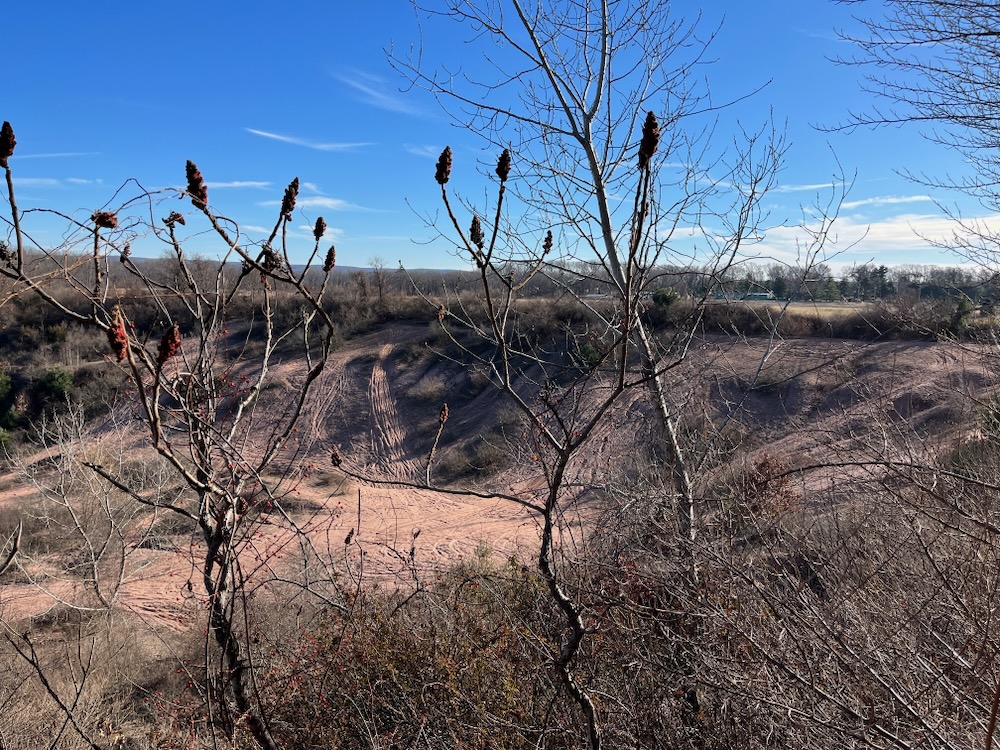
Okay, yeah, to most people (read: 99% of people) this is just some sandy expanse amidst a small park, farmland, and just north of TPC River Highlands in Cromwell. It looks like a mined sand pit crisscrossed by bikers and nothing more.
Oh, but there’s more. You’ll notice the plants here are not central Connecticut plants, but rather the rushes and horsetails found in the sandy soils near the Sound. These are, after all, sand dunes. But why? How?
Much of the below is from John Meszaros who not only contributes to Atlas Obscura, but also works at the Connecticut Science Center. He seems like my kind of human.
Twenty thousand years ago, during the last Ice Age a massive glacier covered Connecticut all the way down to Long Island. As the ice slowly melted back about 18,000 years ago, the water cascading off its edge filled the Connecticut Valley, creating a vast lake. This body of water would have been long and relatively narrow, similar to Lake Champlain or the Finger Lakes of New York. Its southern shore lay along a delta of sediment – today, Glastonbury mostly sits on this sediment.
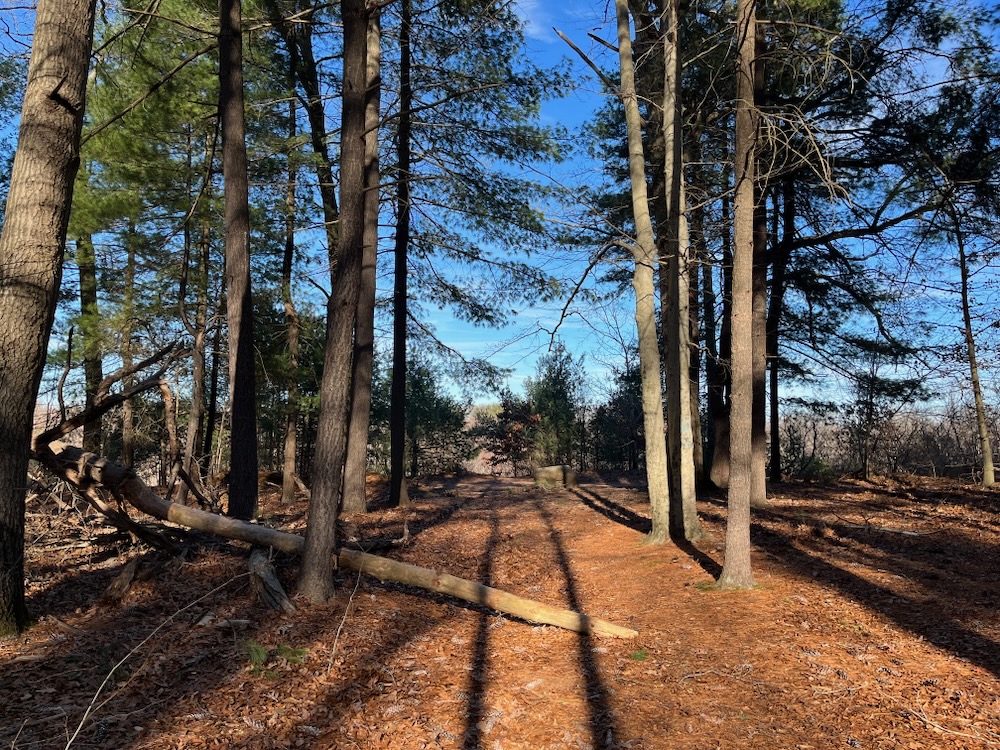
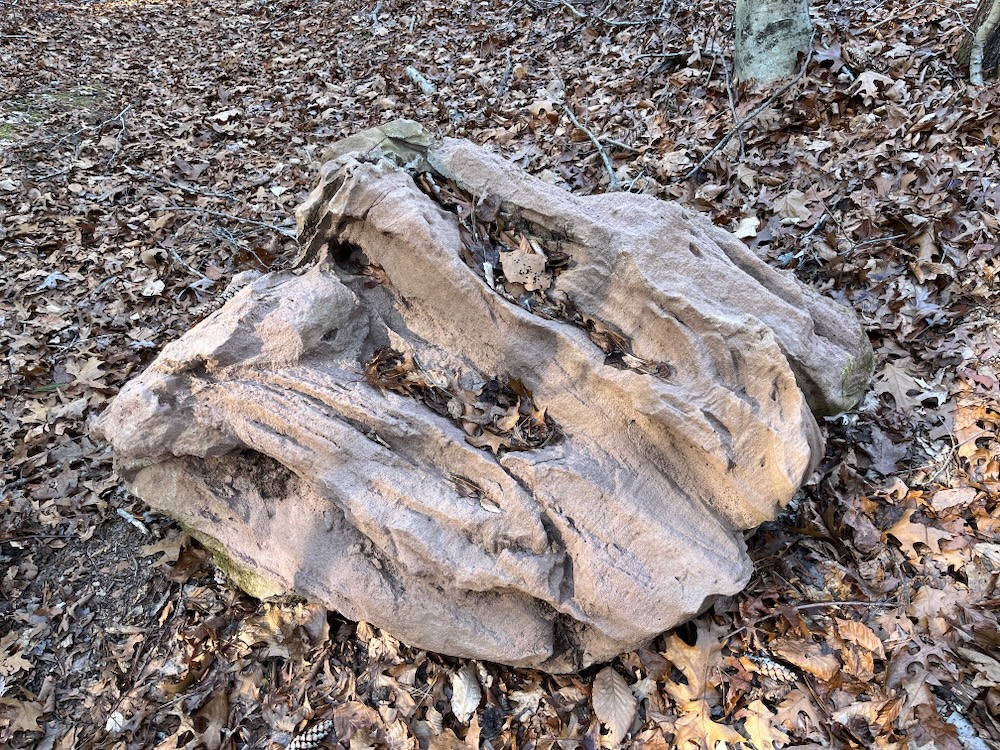
And that is what we’re talking about here in Rocky Hill. The northern end of this lake reached 200 miles north to St. Johnsbury, Vermont.
Researchers who first discovered evidence of this prehistoric lake dubbed it Lake Hitchcock in honor of Edward Hitchcock, an influential 19th century geologist and president of Amherst College. Professor Hitchcock is famous for creating the earliest detailed topographical map of Massachusetts, and for being the first person to scientifically study the fossil dinosaur tracks found throughout the Connecticut Valley.
(Going a little deeper, Hitchcock was a mentee of one Benjamin Silliman who was, in some ways, the father of geologic and chemical study in the Americas. There’s a whole book about Silliman called A Professor, A President, and a Meteor that I reviewed here.)
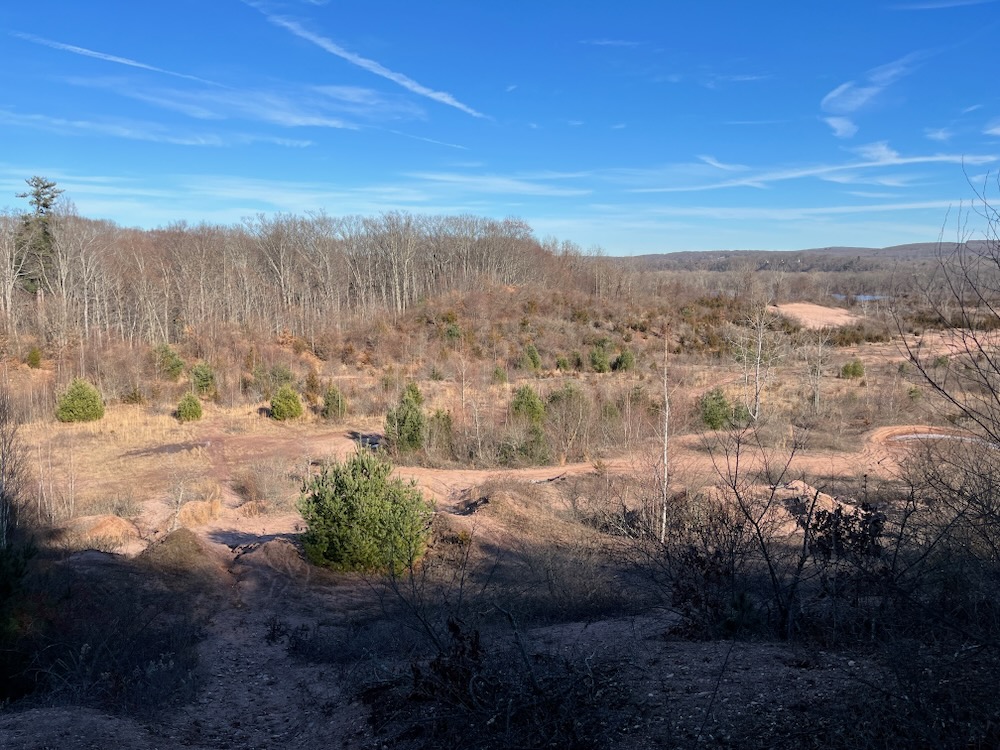
Lake Hitchcock lasted for approximately 6,000 years before it eventually eroded through the sediment dam and drained to the ocean. The dunes in Rocky Hill are striking simply because once you know how they got there, it’s pretty easy to see the function they performed so many millennia ago. This, despite all the sand mining done over the years for various building projects.
In fact, as I stood atop the edge of the cliffs at the western end of the dunes, it was easy to envision it being filled with freezing cold water. According to Meszaros,
If you could have stood on the edge of this great lake, your view would have been much like what you’d see at a modern glacial lake in Alaska or Greenland. The water would have been a milky turquoise from all the suspended silt. Its surface would have been dotted with angular white icebergs calved off the ice sheet.
In the Ice Age, the fauna near the glacier would have been a bit different from what we see today. The land around the edge of the ice would have been bare rock and soil, gradually grading into tough lichens and mosses. Vast herds of caribou would have grazed this tundra landscape and been hunted by packs of wolves. A few miles distant, herds of russet-furred mastodons- relatives of the more well-known woolly mammoth- would have roamed forests of spruce and pine, making crunchy meals of needles, twigs and even small branches. Bear-sized ground sloths and giant beavers would have wandered the leafier hardwood forests at the far southern end of the lake.
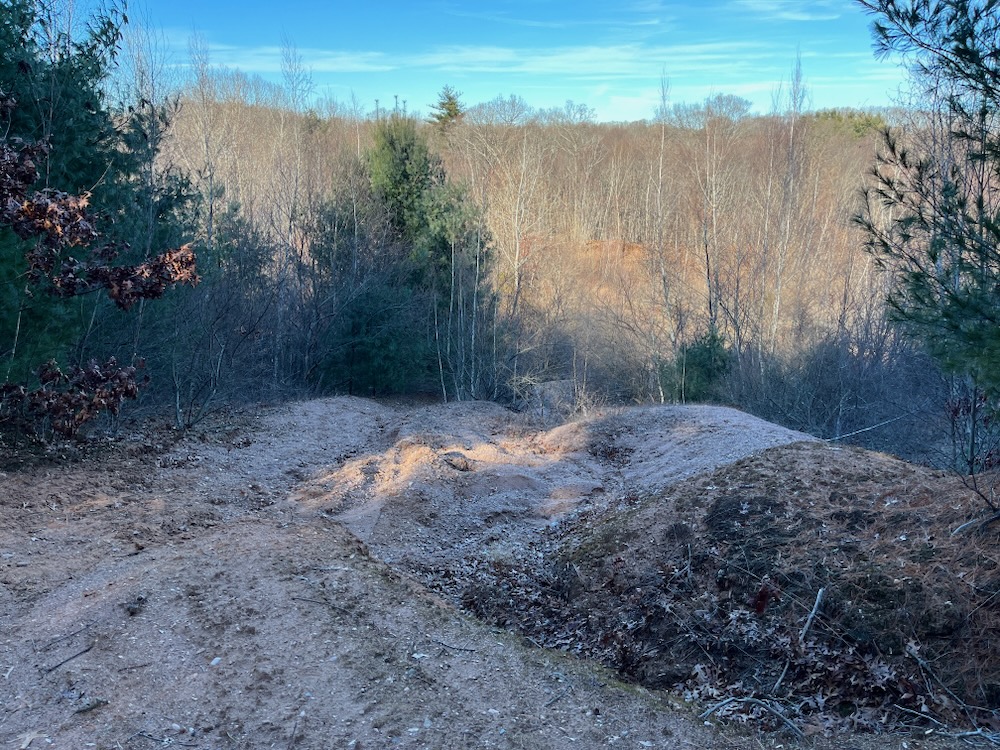
I ended my hikes at Dividend Pond at the dunes and found the area really interesting. Just an entirely different ecosystem than I’m used to in Connecticut and frankly, different from the rest of the trails here, which celebrate industrial history rather than geologic history.
If you’re into this stuff and want to check out another sediment and sand deposit, go check out the Matianuck Sand Dunes in Windsor. They are certainly not as stark as these in Rocky Hill, but offer a different, more intimate experience with the flora and fauna.
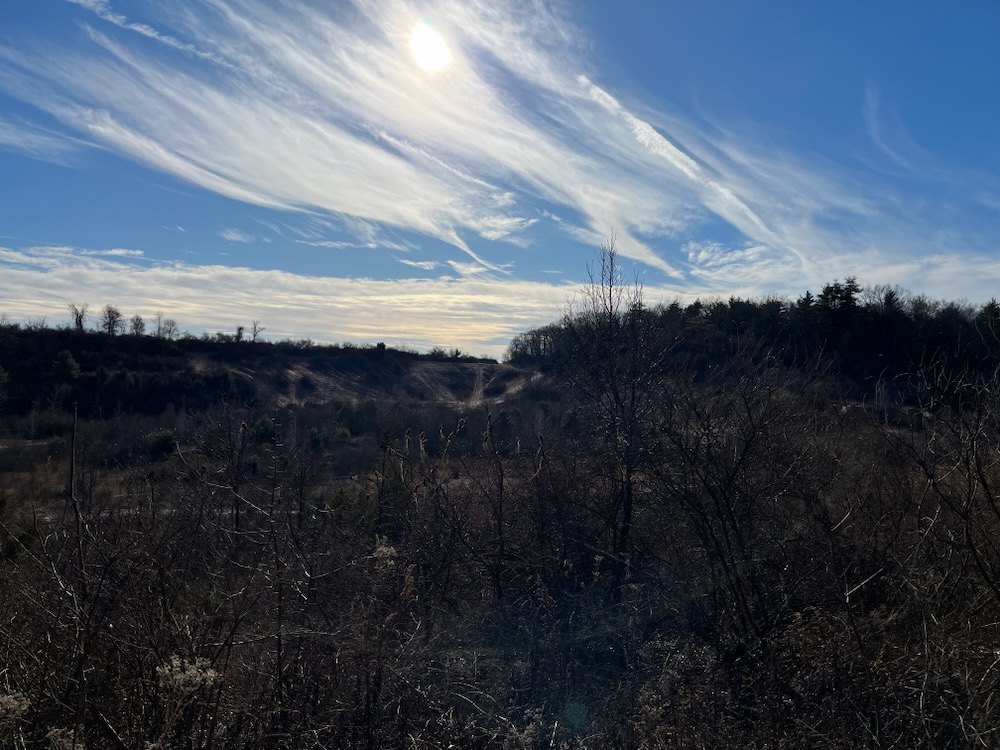
![]()
Thanks to John Meszaros for much of the information above
CTMQ’s Cool Geology
CTMQ hikes Dividend Pond Trails

Leave a Reply